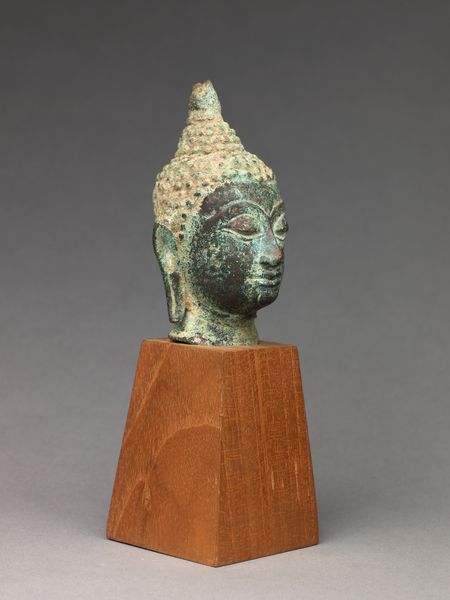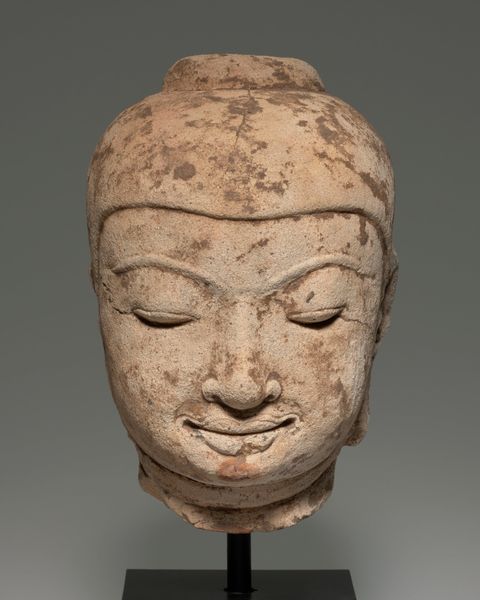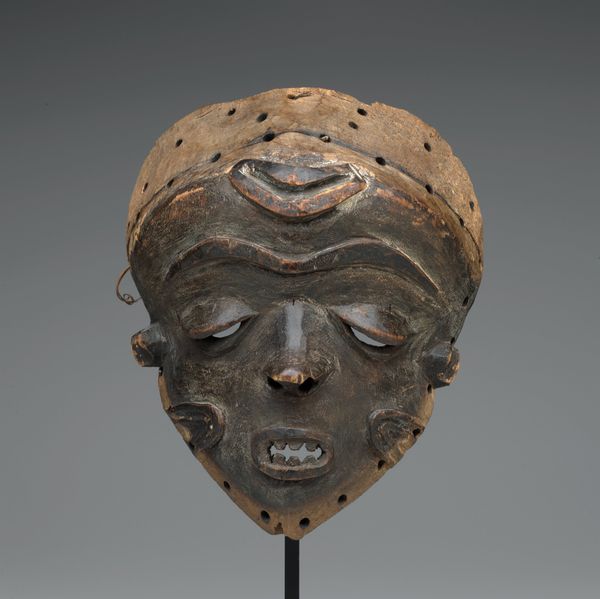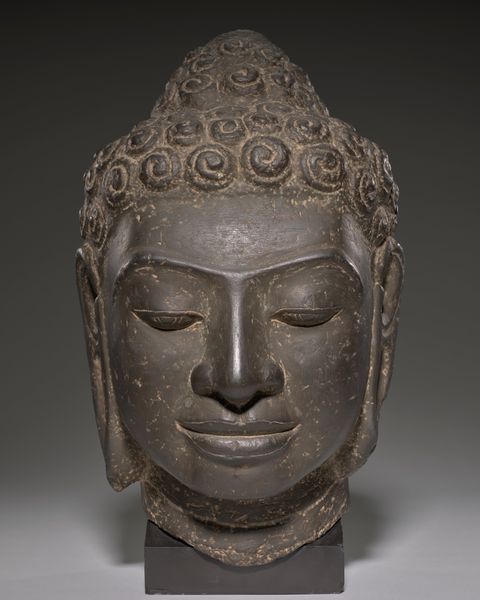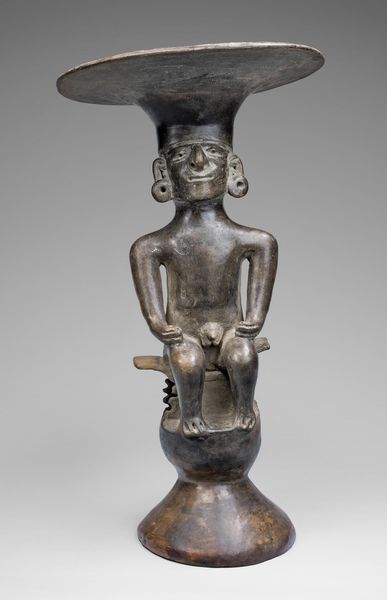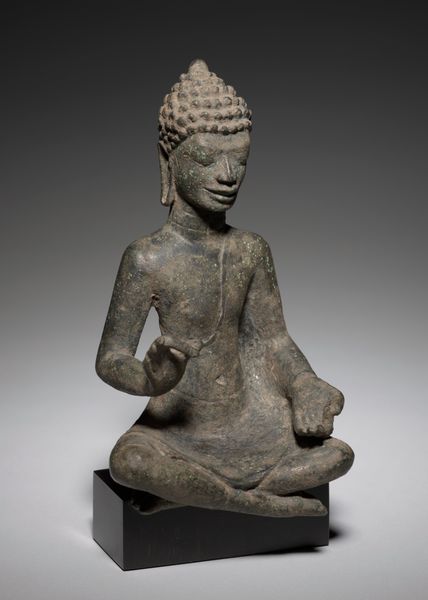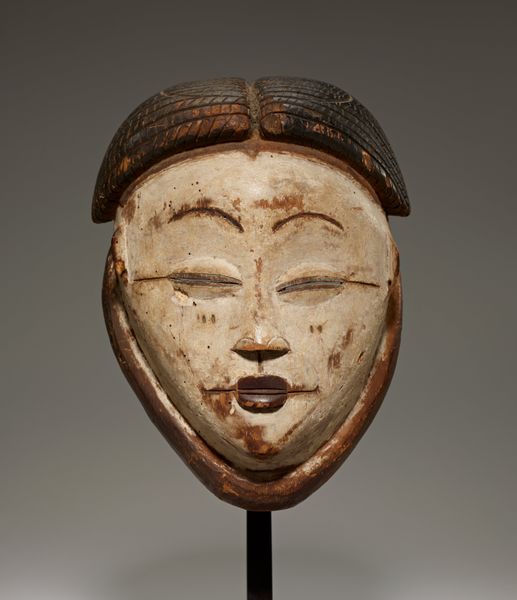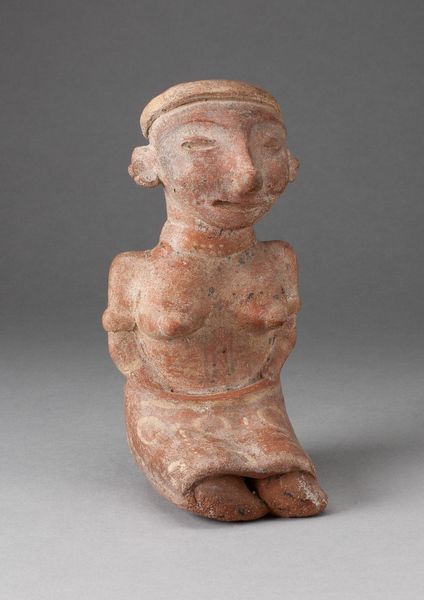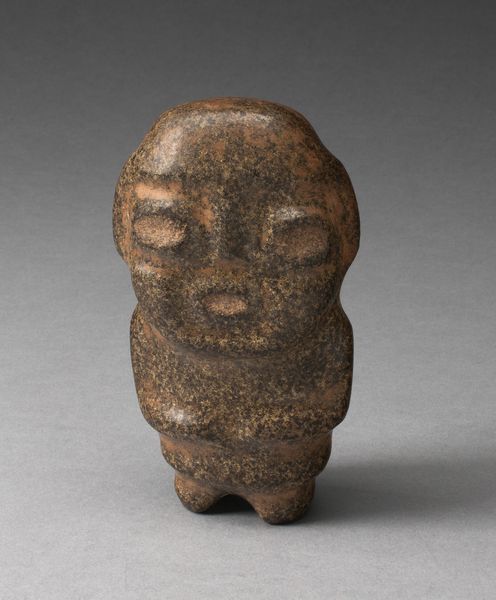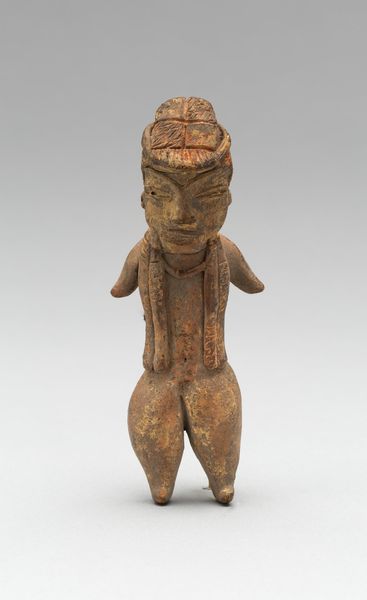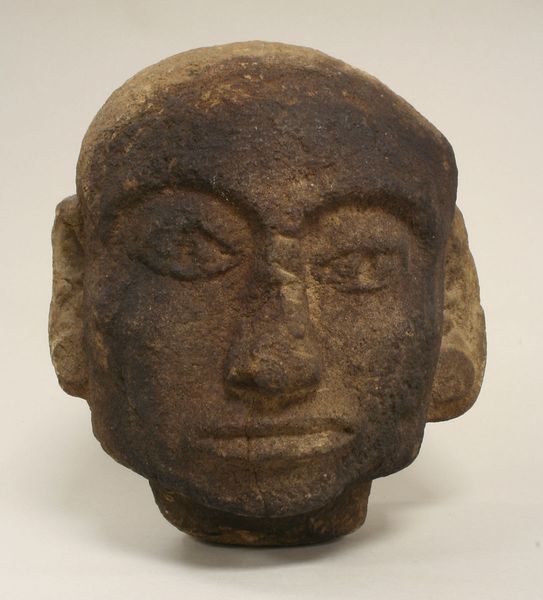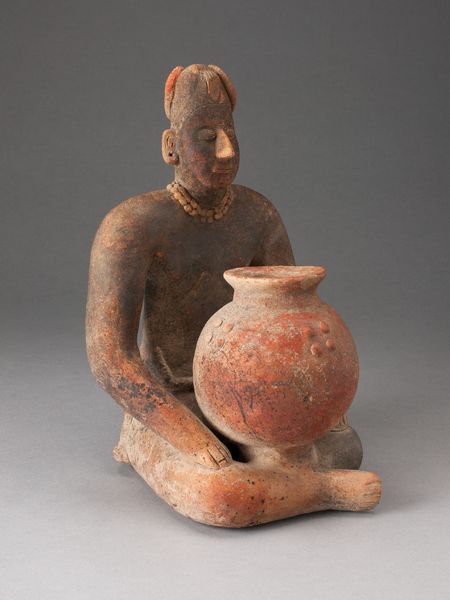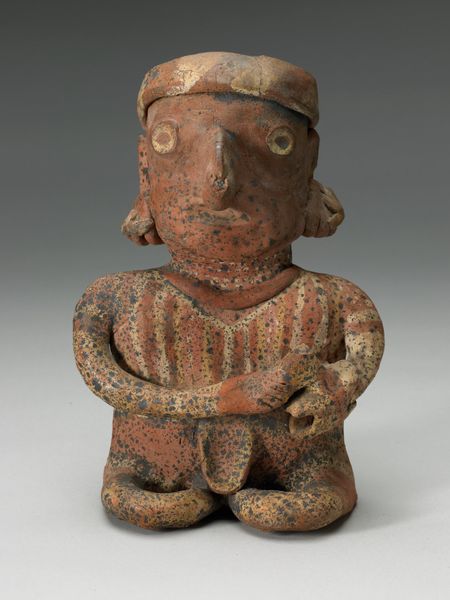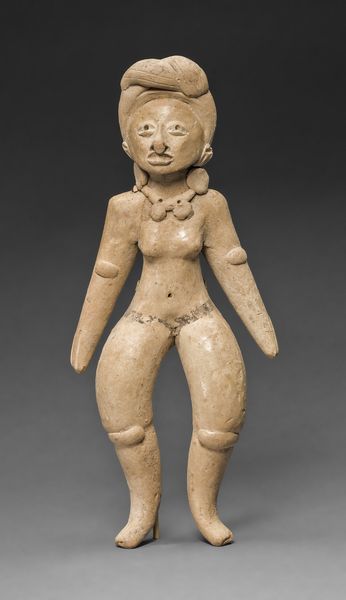
ceramic, sculpture
#
portrait
#
ceramic
#
figuration
#
sculpture
#
yoruba-art
Dimensions: H. 7 3/4 × W. 6 × D. 7 in. (19.7 × 15.2 × 17.8 cm)
Copyright: Public Domain
Curator: This is a "Memorial Head," also known as "Nsodie," created by an Akan artist sometime between 1795 and 1805. It is now held in the collection of the Metropolitan Museum of Art. The medium is ceramic. Editor: My first thought is how incredibly serene this head appears. There is an undeniable sense of dignity in its stillness, especially in the face's subtly sculpted features. It seems smaller than life-size. Curator: These heads were indeed commissioned to honor deceased members of the Akan royal family, and they served specific ritualistic and commemorative functions within the kingdom. The material choice is intriguing. Clay sourced from specific locations held symbolic importance in Akan society, acting as a grounding element in the piece's commemorative purpose. Editor: So the type of clay and where it was mined influenced the perception of the piece? What considerations would these craftspeople take into account to secure appropriate materials? Did it take an incredible amount of labor? Curator: Absolutely. Both its material and production would factor into the cost, along with any possible ritual practice prior to using. The visual details of the head are intriguing, and that hairstyle is highly specific. I'd say that the patterns and motifs represent the deceased’s status. Editor: Right, because its surface decoration and ornamentation denote hierarchical significance and could allude to key biographical elements. Who it portrays mattered! Curator: The position within the royal lineage, relationships within the kingdom, personal accomplishments. Editor: That makes it incredibly interesting to examine these heads now, as relics of that culture held in modern museum institutions. How the act of acquisition, storage, and display shapes our understanding, you know? How far have these materials traveled and changed hands? Curator: Museums and institutions hold the responsibility of stewarding these complex pieces. They allow people access to artistic legacy. And I love seeing a culture's process be admired by new eyes. Editor: Seeing this object today prompts reflection, not only about the individual commemorated, but also on the larger framework of power, display, and material production that have shaped how this memorial head exists in the present.
Comments
No comments
Be the first to comment and join the conversation on the ultimate creative platform.
